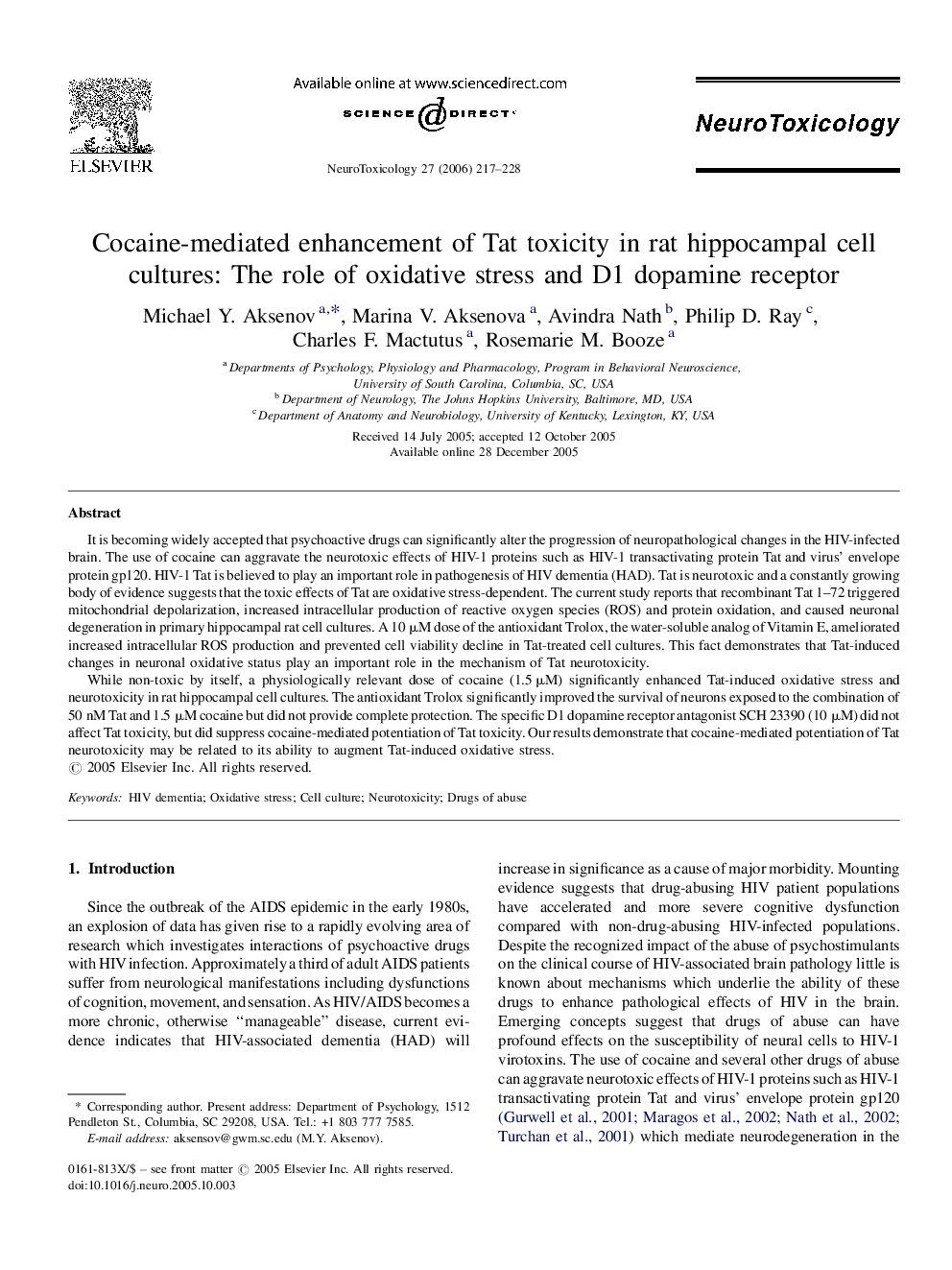| Article ID | Journal | Published Year | Pages | File Type |
|---|---|---|---|---|
| 2590268 | NeuroToxicology | 2006 | 12 Pages |
It is becoming widely accepted that psychoactive drugs can significantly alter the progression of neuropathological changes in the HIV-infected brain. The use of cocaine can aggravate the neurotoxic effects of HIV-1 proteins such as HIV-1 transactivating protein Tat and virus’ envelope protein gp120. HIV-1 Tat is believed to play an important role in pathogenesis of HIV dementia (HAD). Tat is neurotoxic and a constantly growing body of evidence suggests that the toxic effects of Tat are oxidative stress-dependent. The current study reports that recombinant Tat 1–72 triggered mitochondrial depolarization, increased intracellular production of reactive oxygen species (ROS) and protein oxidation, and caused neuronal degeneration in primary hippocampal rat cell cultures. A 10 μM dose of the antioxidant Trolox, the water-soluble analog of Vitamin E, ameliorated increased intracellular ROS production and prevented cell viability decline in Tat-treated cell cultures. This fact demonstrates that Tat-induced changes in neuronal oxidative status play an important role in the mechanism of Tat neurotoxicity.While non-toxic by itself, a physiologically relevant dose of cocaine (1.5 μM) significantly enhanced Tat-induced oxidative stress and neurotoxicity in rat hippocampal cell cultures. The antioxidant Trolox significantly improved the survival of neurons exposed to the combination of 50 nM Tat and 1.5 μM cocaine but did not provide complete protection. The specific D1 dopamine receptor antagonist SCH 23390 (10 μM) did not affect Tat toxicity, but did suppress cocaine-mediated potentiation of Tat toxicity. Our results demonstrate that cocaine-mediated potentiation of Tat neurotoxicity may be related to its ability to augment Tat-induced oxidative stress.
